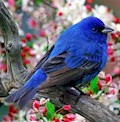Are you sick of rainy days? This so-called July weather? Is it dampening your spirits and killing the social calendar? Is it threatening your species? If the answer to the last question is yes, then you are one of the butterflies that feature in this article, if not then you're like me - just another malcontent, fed up with British weather.
Butterflies are one of the few purely decorative insects you can attract and their variety of colors is astonishing, thus making them a welcome addition to any garden, but, due to last years wet summer, and the continuing trend this year, Britain has seen a severe decline in several species of butterfly. As most of us know, water and wings don't mix, particularly where insects are concerned. A heavy rainstorm is comparable to a blitzkrieg from a butterfly's perspective and all this rotten weather has meant they've been less actively pollinating and breeding.
As such, last weeks article on pond cultivation comes closer to the fore, due to it's role as an insect habitat. The obvious plus is the water source it provides, however, butterflies require peace to flourish, so I'd also suggest a wild patch in your garden that will remain undisturbed by usual garden maintenance and thus provide them with a breeding ground. To this end, you might consider a small nettle patch as this will discourage human contact whilst providing a suitable habitat.
The primary means of enticing butterflies into the garden depends on your planting, because nectar is primarily what will invite them. To ensure the most hospitable environment, you'll want a variety of plants that will provide nectar year round, so it is advised you have a balance of spring bloomers such as Daisies, Dandelions, Pansies and Primroses and to compensate their loss in late summer and autumn, a healthy dose of Marigolds, Knapweed and Lavender. Other examples to really boost your butterfly potential are full sun perennials such as Helenium, which will provide bold color and a large bulbous landing pad to your guests, Lathyrus which offers a daintier foliage and the bonus for us of scent, and the towers of Verbascum, which will dominate the sky line of a butterfly garden - the air traffic control on your own living airfield.
Shrubs that butterflies love include Buddleia, Hebes and Lilac and certain herbs also attract the insect, due to their scent. These include oregano, thyme and mint.
It is important to remember that your butterfly population will be relative to your gardening variety i.e. the greater the number and mix and plants, the greater the potential for their propagation.
Due to their erratic behavior, butterfly spotting is no simple task, however, look out in your own gardens for species like the Common Blue with their lilac veined wings and white trim, the flamboyant Peacock with big blue-eyes on its wings, or the small Tortoiseshell, tiger striped with segmented blue edging, to know just how much your helping their species. Other, threatened, types to watch out for are the toffee colored Small Skipper, the Ginger Lulworth Skipper, Chalk Hill Blue and the Wall Brown species.
